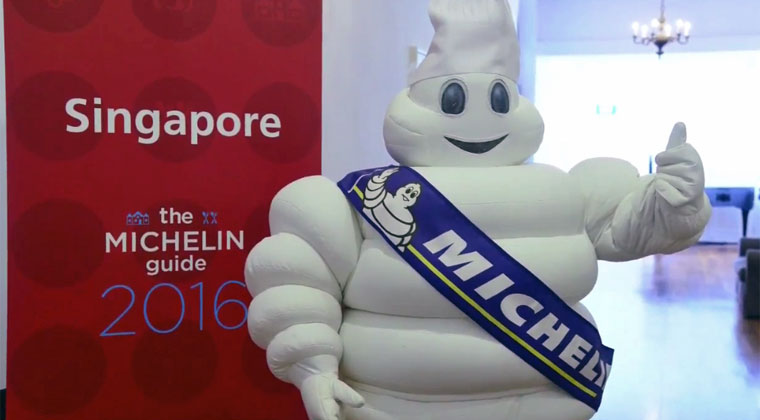We read 10 articles to bring you the gist of the Michelin Guide that has hit Singapore.
Articles include this, this, this, this, this, this, this, this, this and this.
1. It is not an objective measure of how good a particular food is.
The biggest gripe about the Michelin star: How can a self-service S$5 hawker centre food be compared to a sit-down-get-served restaurant dinner with mood lighting and air-conditioning?
So, is the Michelin Guide saying, "Jaan at Swissotel The Stamford is the same as Hill Street Tai Hwa Pork Noodle in Crawford Lane, since both have a star each now?"
If the stars are anything to go by, that is exactly what it is saying. Which absolutely makes no sense whatsoever because that's comparing apple with orange.
For the record: Michelin has never made it a point to explain how these stars correspond to the food. There's no algorithm behind it. And that's why it's called a Guide. Not a Bible.
The holding line by Michelin has always been: Restaurants are assessed by Michelin inspectors, who dine independently and anonymously. The judging criteria include cooking techniques, level of creativity, consistency of culinary standards, and value for money.
Which then leads to the next question: How on Earth did Michelin inspectors eat through thousands of restaurants in Singapore in six months? Did they even try zi char? Kway chap?
In all honesty, they didn't.
2. Michelin Guides are not produced as some altruistic venture. They are meant to turn profit.
From the get-go, Michelin Guides were published to serve oblique ends: In 1900, they were supposed to make people get in their cars and drive around to find stuff to eat that were recommended by Michelin, and in the process, wear out the tyres so that Michelin sells more tyres.
These days, Michelin Guides are about names, names, names and more names.
French chef Joel Robuchon has two restaurants in Resorts World Sentosa. Resorts World Sentosa is a Michelin sponsor. Restaurant Joel Robuchon and L’Atelier de Joel Robuchon in Resorts World Sentosa were awarded three stars and two stars respectively.
Hahahahaha, what a coincidence. Life has a funny way.
Next up, Michelin is going ahead with doing events with star-studded chefs, where ticket prices start at around few hundred bucks per pax.
And after Singapore, they are probably moving into Bangkok.
3. Different countries have different ways of assessing establishments.
Apparently, in Singapore, some restaurants knew in advance a Michelin inspector was going to show up because his showing was announced and publicists got wind and soon the restaurant community was buzzing with setting up their tables nicely, plating their fare to look higher and brighter and hiding from public view the waitress with the resting bitch face.
And apparently, Michelin inspectors even left their name cards after eating to at least signify that they did try a place beforehand before starring it.
Announcing who they were was a big no-no for Michelin inspectors where the tradition of Michelin reviewing first started, as anonymity had to prevail, or else.
That being said, the arrival of the Michelin Guide can raise the standards of the food and beverage industry in Singapore. Food establishments will be kept on their toes, by getting better or at least maintaining standards.
But take Japanese restaurant Shoukouwa, who has been in Singapore for a mere four months. How did Michelin inspectors manage to eat at the restaurant for several times? The international director of Michelin Guides, as ST food critic noted, struggled to explain this.
But there are conflicting reports as to whether service even plays a part in helping establishments get stars.
Kitchen hygiene definitely does, as Michelin inspectors do request to see how the sausage gets made.
4. Having a Michelin star can be a curse.
A star gained one day can be a star lost on another.
French chef Bernard Loiseau committed suicide in 2003 because he thought he was going to lose one of his three stars.
So, establishments will suffer a dent in reputation if a star is lost.
And things are far from prestigious when seen from another perspective.
Because with such a high density of restaurants and eateries in tiny Singapore, to only have 29 establishments earn stars is a slap in the face for culinary culture and heritage in food-crazy Singapore.
Moreover, French and European cuisine dominated Singapore's Michelin Guide, with nine representatives.
Note also, the lack of Malay and Indian cuisine making it into the guide.
It is an affront to everything this country has stood for.
An affront, you hear.
5. The Singapore Guide can go the way of Hong Kong's and Macau's Michelin Guides.
Which means they are more controversial and useless than being useful, with all kinds of dubious choices showing up year after year for the sake of creating buzz for the Michelin Guide.
Not naming names though.
Top photo via
If you like what you read, follow us on Facebook and Twitter to get the latest updates.
If you like what you read, follow us on Facebook, Instagram, Twitter and Telegram to get the latest updates.
